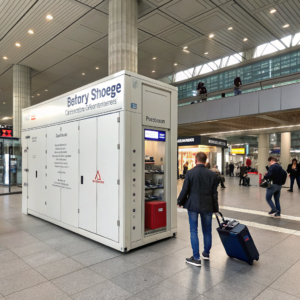Grid-Tied vs. Off-Grid Solar Systems: Which One Fits Your Needs?
•
Struggling to decide between grid-tied and off-grid solar? Your choice impacts everything from system costs to energy independence and maintenance requirements.
Grid-tied systems connect to the utility grid for backup power and net metering benefits, while off-grid systems require battery storage and complete self-sufficiency - with 30-50% higher upfront costs for off-grid installations.
The fundamental difference comes down to reliability versus independence. While grid-tied systems offer convenience and financial benefits, off-grid solutions provide energy autonomy where utility connections are impractical or unavailable.
How Grid-Tied Systems Work and Their Benefits
Why do 95% of residential solar installations choose grid-tied systems? The answer lies in their simplicity, cost-effectiveness, and reliable backup from utility power.
Grid-tied solar systems feed excess power to the utility grid (earning credits) while drawing grid power when needed, eliminating battery costs and providing 99.9% uptime reliability.
The Advantages of Grid Connection
-
Key Components
- Solar panels
- Grid-tied inverter
- Net meter (no batteries required)
-
Financial Benefits Feature Advantage Net Metering Earn credits for excess generation Lower Costs 30-50% cheaper than off-grid Utility Backup No need for expensive battery banks -
Performance Considerations
- System sizing based on annual usage (not peak demand)
- No power during grid outages (unless hybrid with batteries)
- Typically 10-15 year payback period
Best For: Urban/suburban homes with reliable grid access wanting to reduce electricity bills with minimal maintenance.
The Independence and Storage Needs of Off-Grid Systems
What does it truly take to live completely free from the utility grid? Off-grid solar demands careful planning, robust storage, and often lifestyle adjustments.
Off-grid solar systems require battery banks (typically 3-5 days storage), backup generators, and oversized solar arrays to ensure uninterrupted power - costing $3-$5/W compared to $1-$3/W for grid-tied.
Off-Grid System Requirements
-
Essential Components
- Solar array (typically 25-50% larger than grid-tied)
- Charge controller
- Battery bank (LiFePO4 or lead-acid)
- Backup generator (optional but recommended)
-
Sizing Considerations Load Type Daily Consumption Storage Needed Lighting 1-3 kWh 3-5 days Refrigeration 2-4 kWh 3-5 days Water Pump 1-2 kWh Peak demand -
Maintenance Demands
- Regular battery maintenance/checks
- Generator servicing
- More frequent component replacement
Critical Factor: Off-grid systems should be designed for worst-case scenarios (winter sun, cloudy periods) not average conditions.
Which to Choose: Grid-Tied or Off-Grid?
How do you determine the right solar solution for your specific situation? The decision matrix depends on location, budget, and energy priorities.
Choose grid-tied if you have reliable utility access and want maximum savings; opt for off-grid if you're in a remote location or prioritize complete energy independence despite higher costs.
Selection Criteria Comparison
-
Cost Analysis System Type Avg Cost per Watt 10-Year Cost Grid-Tied $1.50-$3.00 $15,000-$30,000 Off-Grid $3.00-$5.00 $30,000-$50,000+ -
Location Factors
- Grid availability/reliability
- Sun exposure variability
- Local net metering policies
-
Lifestyle Considerations Priority Recommended System Cost Savings Grid-Tied Reliability Grid-Tied with Battery Backup Independence Off-Grid
Hybrid Option: Many homeowners now choose grid-tied systems with battery backup - gaining both financial benefits and outage protection.
Conclusion
Grid-tied systems offer affordability and simplicity for most users, while off-grid solutions provide energy independence at higher cost - with hybrid systems emerging as a popular middle ground.






